Did you know that the world’s busiest suspension bridge is located in New York City?
In this post, you’ll discover the ultimate list of facts about the George Washington Bridge, one of the most fascinating bridges in the world!
1. The George Washington Bridge connects Manhattan with New Jersey
The bridge in New York spans the Hudson River and connects the New York borough of Manhattan with the New Jersey borough of Fort Lee.
It has been of massive importance for the development of Bergen County in New Jersey as it provides easy access to New York. It also enables Interstate 95, the main Interstate Highway on the U.S. east coast which runs all the way from Florida to the Canadian border, to cross the Hudson River.

2. The bridge had another name during construction
The bridge was named after the first president of the United States, George Washington, who in 1776 during the American Revolutionary Wars occupied two fortified areas named Fort Washington on the New York side and Fort Lee on the New Jersey side.
When things didn’t work out as planned, George Washington pulled out of Manhattan by crossing the river between the two forts, so that’s how the bridge got its name.
It wasn’t named this way initially though. During construction, the bridge was named the “Hudson River Bridge” or “Fort Lee Bridge.” The Port Authority of New York, which commissioned its construction and manages it, wanted to avoid contested names such as the Brooklyn Bridge or Manhattan Bridge, so sought to find its official name in 1931.
The bridge is also commonly known as the GW Bridge, the GWB, the GW, or simply the George.
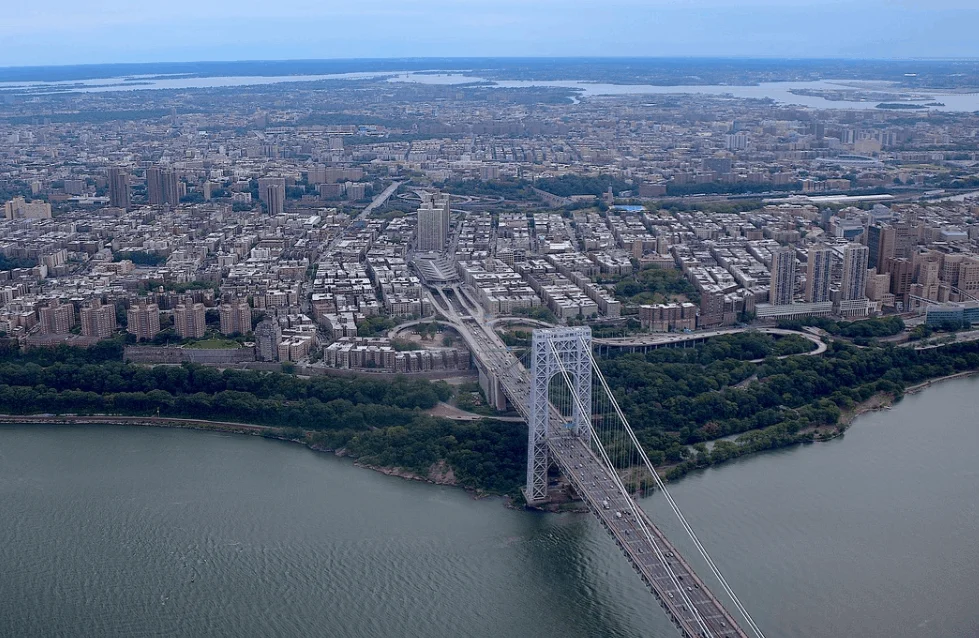
3. It carries well over 100 million vehicles every year
The bridge was originally intended to carry 8 million vehicles the first year it was completed. It has since been expanded twice with the addition of extra lanes and an additional lower deck and has since shattered this estimate multiple times.
It’s estimated that over 105 million vehicles cross this bridge every year, which is an average of nearly 290,000 vehicles every day. This makes the George Washington Bridge the busiest suspension bridge in the world!
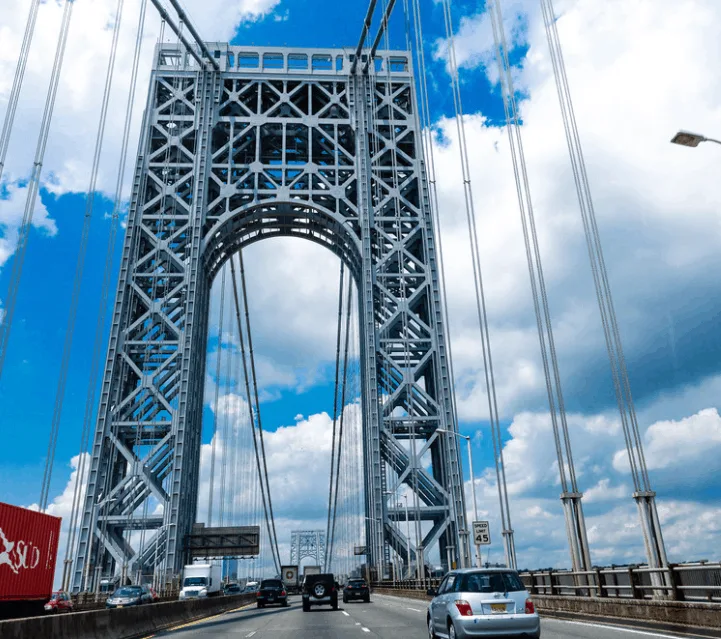
4. It was the longest suspension bridge in the world upon completion
At the time it was completed in 1931, the George Washington Bridge held the record of being the longest suspension bridge in the world with the longest main span. It has a total length of 4,760 feet (1,450 meters).
The main span has a length of 3,500 feet (1,067 meters) and the bridge has a width of 119 feet (36 meters). The record was broken by the Golden Gate Bridge in San Francisco when it was completed in 1937.
The two towers stand 604 feet (184 meters) above the water below and the clearance below in the middle of the bridge is 212 feet (65 meters).
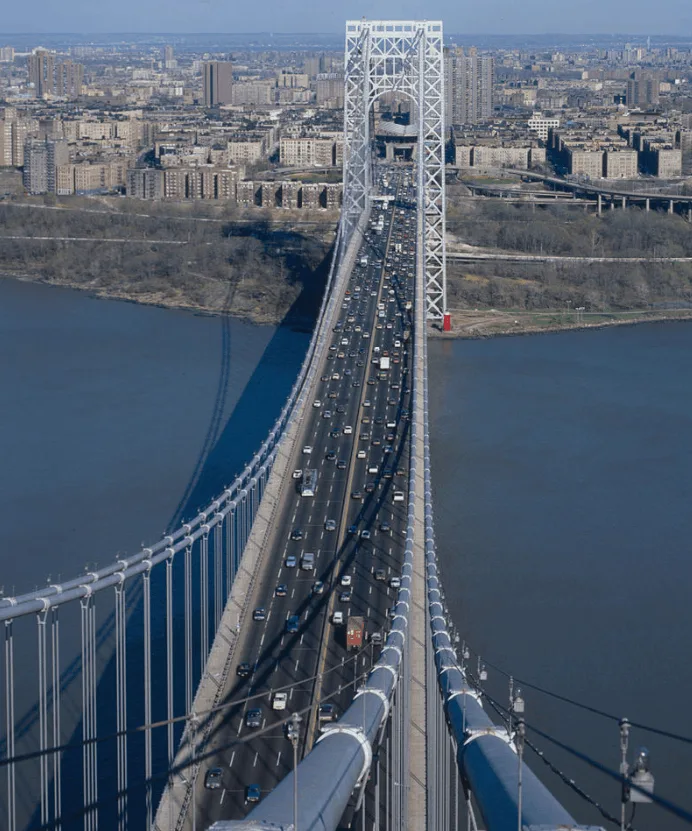
5. A bridge on its location was proposed as early as 1906
When the Holland Tunnel was being planned in the early 20th century, ideas of building a suspension bridge from Manhattan to New Jersey were being proposed.
In 1906, 3 suitable locations were determined which included the 57th, 110th, and 179th Streets in Manhattan. It wasn’t until the year 1924 that a concrete plan was proposed though on the 179th Street location.
The reason this spot was chosen is that both sides of the river were surrounded by cliffs which had a double benefit:
- The bridge wouldn’t interfere with maritime traffic on the river.
- It wasn’t needed to build long approach ramps.
A bill was submitted in December 1924 and it was passed in February 1925.
6. It was designed by some of the world’s most renowned architects
If you want to build a durable bridge, then hiring a Swiss civil engineer isn’t the worst idea in the world. That’s why Othmar Ammann was hired as the chief engineer of the project and was asked to make an initial plan in 1925.
Ammann would end up becoming the chief engineer of multiple other famous bridges in the United States, including the Bayonne Bridge and the Verrazzano-Narrows Bridge.
Another renowned architect on the team was Cass Gilbert, an early proponent of amazing skyscrapers and world-famous for his work on the Woolworth Building, the tallest building in the world in 1913.
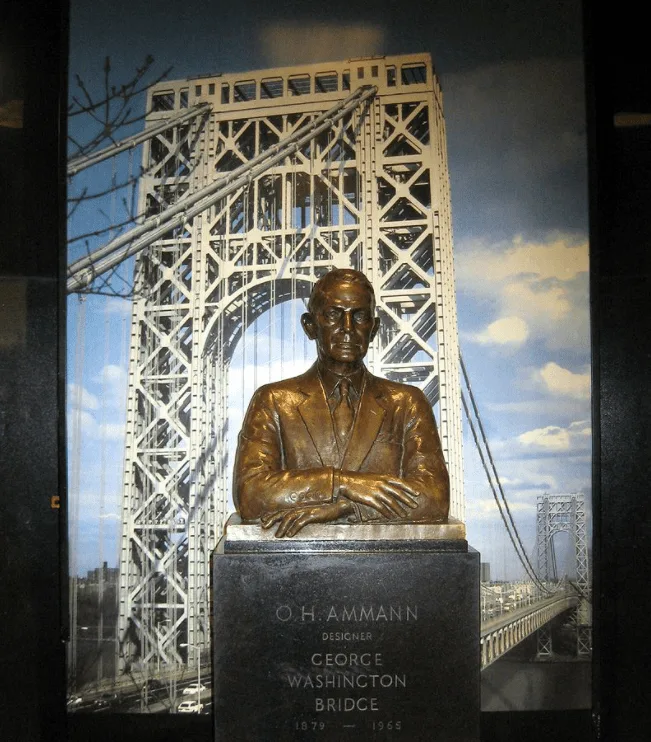
7. The bridge is supported by 4 main cables and 105,986 wires
One of the most amazing facts about the George Washington Bridge is that the cables of the bridge have to support a weight of 90,000 short tons (80,000 long tons), but are actually able to carry 4 times this amount!
This is possible due to 4 huge main cables which each consist of 61 strands of 434 individual wires. This means each of the main cables consists of 26,474 wires resulting in the bridge being supported by a total of 105,986 steel wires!
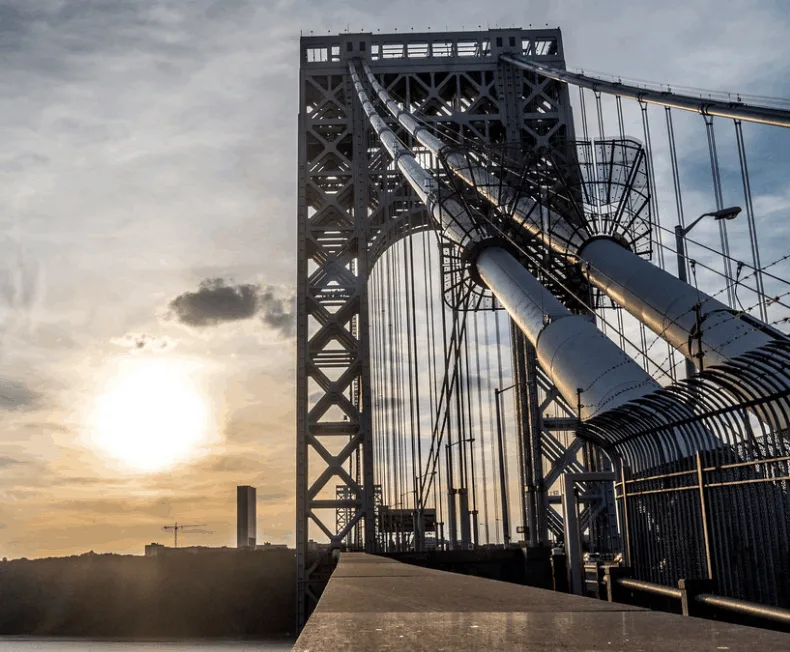
8. The design of the suspension towers was originally completely different
One of the most prominent features of the bridge is its two massive suspension towers, each standing 604 feet (184 meters) tall, weighing between 37 and 40 short tons (33 and 36 long tons), and held together by a combined 475,000 rivet.
One of the most remarkable facts about the George Washington Bridge is that these towers were supposed to look completely different than the result as they were originally designed to be clad with granite. This would have made them look similar to the look of the towers of the Brooklyn Bridge.
The plan to cover the steel framework of the towers got postponed when the Wall Street Crash of 1929 plunged the country into the Great Depression following the Roaring Twenties. As people started to get used to the steel towers and actually found them aesthetically pleasing, the granite façade was never created.
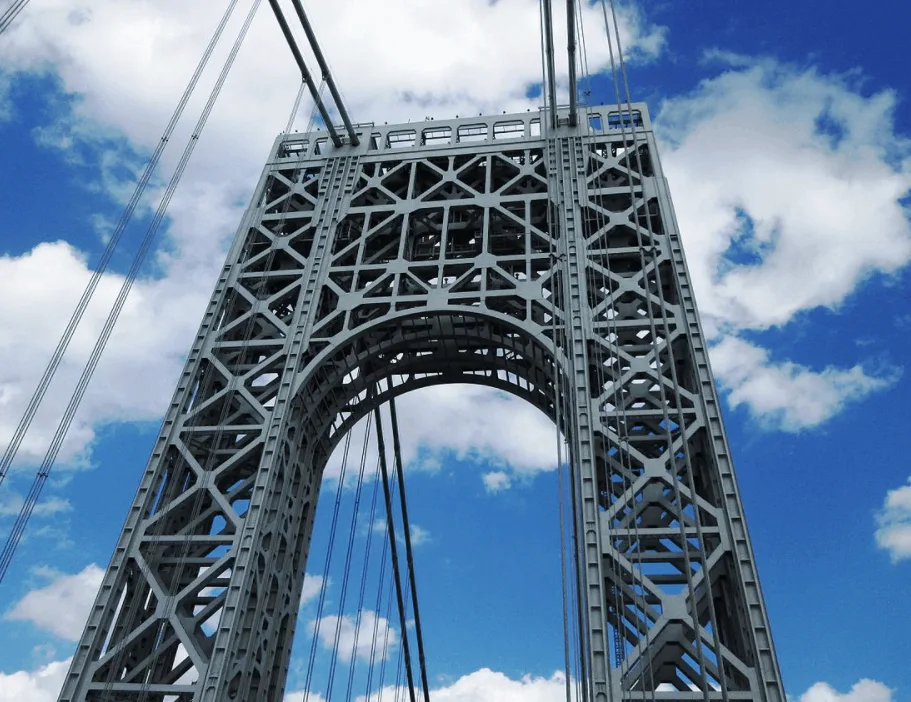
9. The construction officially started on September 21, 1927
The groundbreaking ceremony was conducted on both sides of the bridge, on the location that the suspension towers were to be constructed.
This happened on September 21, 1927. Shortly after, the base of the towers was secured inside a watertight cofferdam inside the riverbed and huge amounts of steel were ordered to start the construction process.
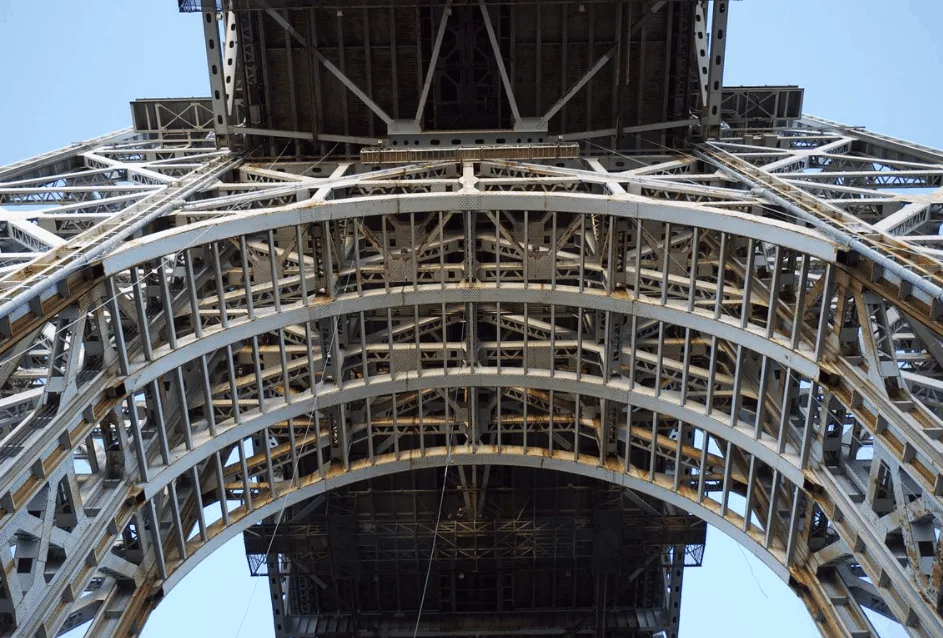
10. A lot of explosions were needed on the New Jersey side
The approaches to the bridge are surrounded by cliffs. The holes for the anchorage of the bridge could be bored directly into these cliffs, but a problem arose on the New Jersey side.
The Palisades, as these cliffs are called, disrupted the approach towards the bridge. Therefore, about 225,000 cubic yards (172,000 cubic meters) of rock were blasted to make way for these roads.
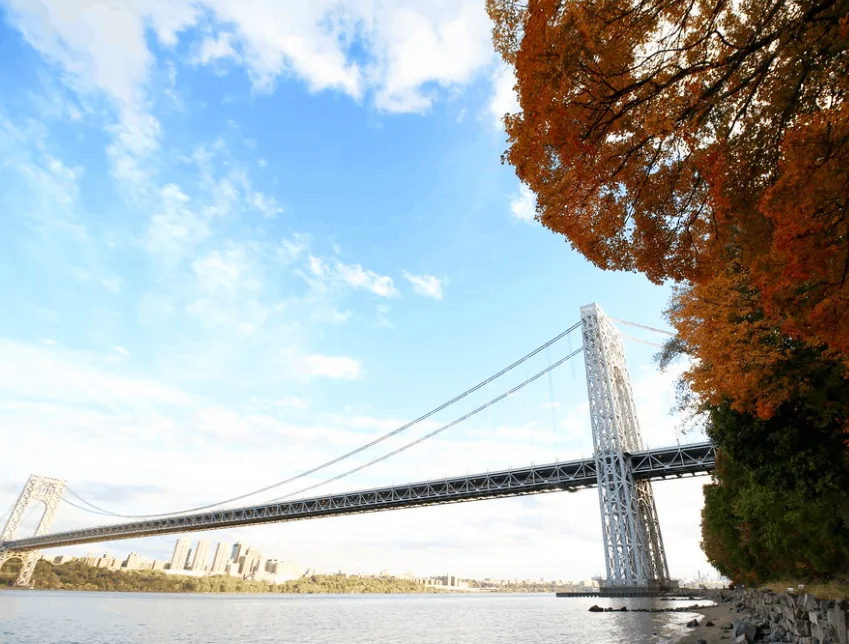
11. Spinning the bridge’s cables was a massive endeavor
The main cables are 36 inches (91 centimeters) wide and all the 105,986 additional cables had to be spun around them to ensure the bridge could support the massive weight of the decks and traffic.
A team of 350 construction workers had to take care of this huge endeavor and were able to finish the first main cable in July 1930. Just one month later they managed to complete the other 3 cables, an impressive achievement as it took just 10 months to spin all wires!
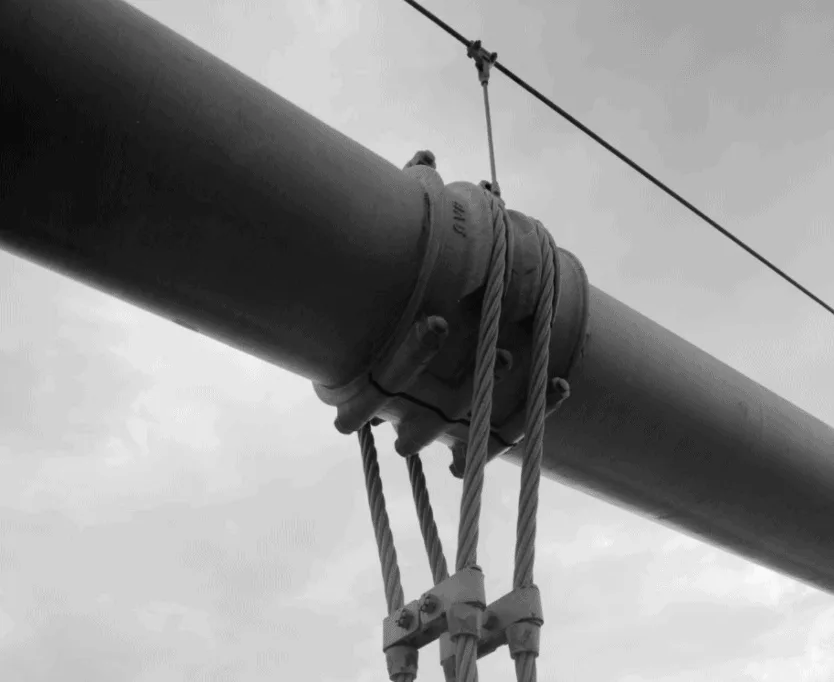
12. The bridge was officially opened just 4 years after construction had started
One of the most amazing facts about the George Washington Bridge is that the schedule assumed the bridge would be completed in early 1932. The entire construction team had done such an amazing job that the bridge was opened several months ahead of schedule!
A grand opening was organized on October 24, 1931, which marks the day the first travelers crossed the newly constructed George Washington Bridge!
13. The cost to build the bridge remained well below the estimated cost
Another one of those astounding facts about the George Washington Bridge is that the builders manage to stay well below the estimated construction cost as well.
While the bridge was being built, the estimated cost amounted to about USD 75 million. The eventual cost was about USD 60 million, which is still a massive amount nonetheless.
Calculated with inflation in mind, this amounts to nearly USD 1.2 billion today!

14. The lower deck was nicknamed after Washington’s wife
The bridge has been expanded twice in its history due to rapidly increasing levels of traffic:
- 1946 – The bridge was widened so it could 8 instead of 6 lanes.
- 1958 to 1962 – An additional 6-lane deck was added below the original deck.
One of the funniest facts about the George Washington Bridge is that the lower deck has been nicknamed “Martha,” referring to the wife of George Washington. We can only assume that the top deck has been nicknamed George!
Martha ensured that the bridge’s capacity expanded by about 75% as well.
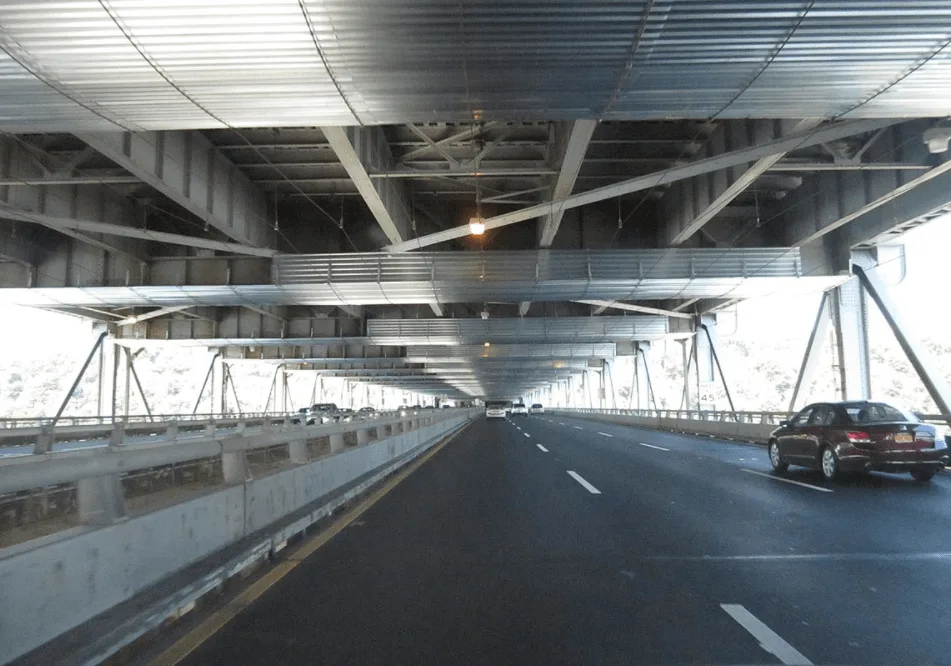
15. No other suspension bridge in the world has so many traffic lanes
With the original deck being expanded from 6 to 8 lanes and the addition of Martha which has 6 lanes, the George Washington Bridge has a total of 14 lanes.
This makes it the number 1 suspension bridge in the world by several lanes, which explains why it is the busiest bridge in the world as well.
16. It’s rather expensive to cross the bridge with a vehicle
Being the busiest bridge in the world makes the George Washington Bridge a great earner, especially if you know that it’s quite expensive to actually cross the bridge with a vehicle if you travel to New York City (no toll is charged when going to New Jersey).
By 2021, all tolls will be collected electronically and vary based on the time you cross the bridge and what vehicle you drive.
Want to cross the bridge for free?
You can also walk or use a bicycle on the top deck!

17. It’s not just the busiest, but also one of the most iconic bridges in New York
The George Washington Bridge has become one of the most iconic landmarks in New York. The steel towers make it easily recognizable and therefore a perfect shot to use in movies.
Some of the most notable movies the bridge was featured in were “Copland” (1997) with Sylvester Stallone and the all-time number 1 crime film “The Godfather” (1972).



